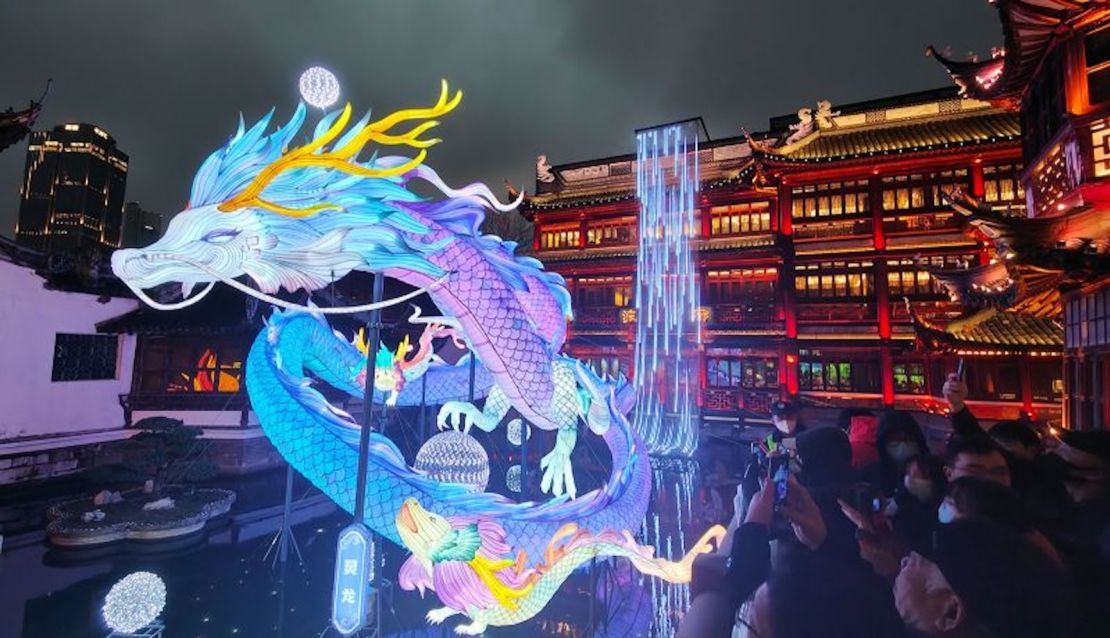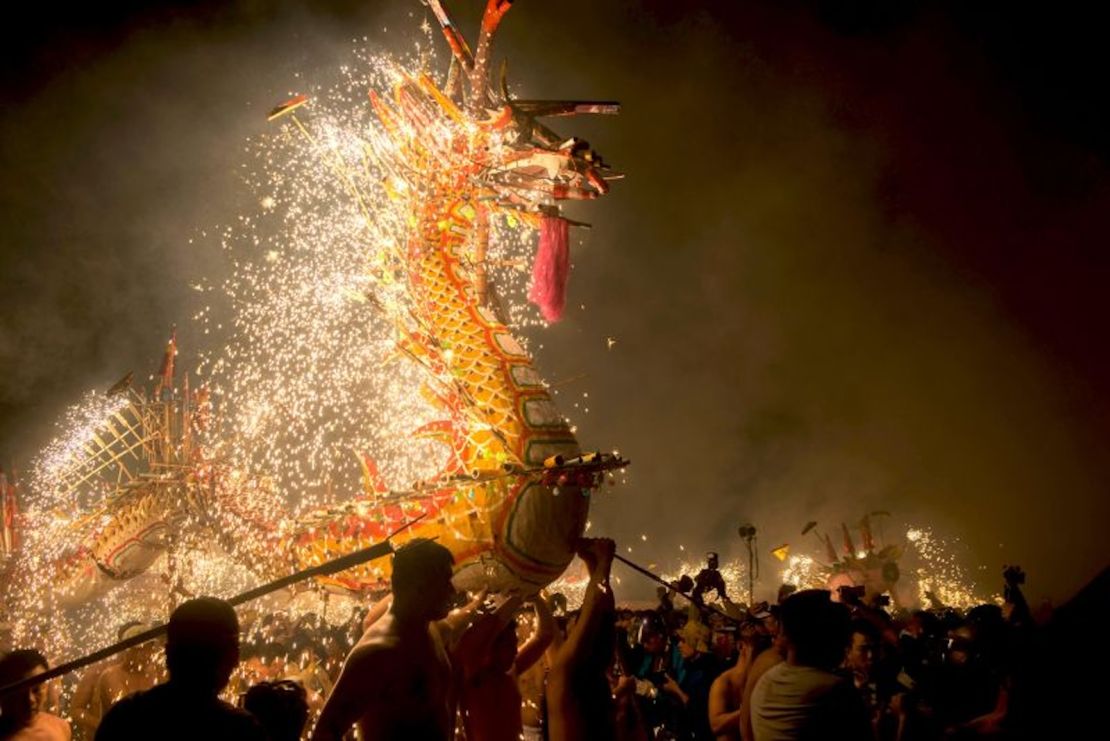(Spanish ) – At this moment, millions of people worldwide participate in one of the most important festivals of the year, the Lunar New Year, which marks the first new moon of the lunar calendar.
This year falls on January 29, starting the 15 -day spring festival.
Whether you are not familiar with the New Year lunar or need a review, this guide will highlight some of the most common traditions associated with this celebration that extends to many Asia countries.
Actually, this is not its official name: in China, the festivities are known as Spring Festival or Lunar New Year. Precisely, they begin with the second moon After winter solsticea date that can range from the end of January to mid -February at the Gregorian calendar.
Nor is it celebrated a single day. Chinese New Year celebrations begin on the first day of the first lunar month in the Chinese calendar and extend for 15 days, when the full moon arrives. It is a time when usually families gather And they cross long distances to get home to see their loved ones. The tradition was threatened two consecutive years by the Coronavirus. In the case of many, this is the only year They have to return to their homes and bring gift bags.
A great family meeting dinner is generally celebrated on the eve of the Lunar New Year.
The menu is chosen carefully to include dishes associated with luck, including fish (the Chinese word also sounds like “surplus”), puddines (symbolizes progress) and foods that look like gold bullion (such as mass balls).
In China, the food served in these classic dinners vary from north to south. For example, the northern Chinese tend to eat dumplings and noodles, while the southern Chinese cannot live without steamed rice.
But it doesn’t matter what dishes you prefer, lunar New Year meals are a feast of words.
Each of the 15 days that composes the celebration It has its own traditions. On the eve of the Chinese New Year, for example, families meet for dinner together. There is also the habit of staying at home to receive good fortune or visit the in -laws. In addition, money is delivered in a red envelope, called “Hong Bao” To children and adults without a partner. In recent years, the gift has migrated to the digital.
The tradition of launching fireworks comes from the habit of turning on bamboo stems to move away evil spirits, such as the half -dragon monster, half León “Nian”, which, which According to legend comes of his hiding place in the New Year lunar to attack people. But his ears are his weakness, so in ancient time people set fire to bamboo stems to scare him. Over time this resulted in fireworks.
And the lunar new year ends with the flashlight festivalheld at night with parades and display of flashlights. The main event of this day is the dragon dance: beautiful dragons made of paper, silk and bamboo are sustained on the heads and seems to dance during the parade.
Although incredibly complex, the Chinese zodiac calendar is best described as a 12 -year cycle represented by 12 different animals, in this order: rat, ox, tiger, rabbit, dragon, snake, horse, goat, monkey, rooster, dog and pig.
Your animal zodiac animal sign is determined by your year of birth, which means that 2025 will welcome the world to many baby snakes. Those born in 2026 will be horse, and so on.

His followers believe that for each sign of the Chinese Zodiac, luck will depend largely on the positions of the Tai Sui, a collective name for the star deities that are believed to revolve in parallel and in the opposite direction to Jupiter.
Different geomance teachers can interpret the data differently, but there is generally a consensus about what the year means for each zodiac animal according to the positions of the stars.
There are innumerable popular stories related to the New Year lunar, but the myth of “Nian” stands out as one of the most fun.
Legend has it that Nian was a fierce underwater beast with sharp teeth and horns. Each eve of the Lunar New Year, crawled to Earth and attacked a nearby village.
On one of those occasions, while the villagers rushed to hide, a mysterious old man appeared and insisted on staying despite having been warned of an imminent perdition.
To the surprise of the villagers, the old man and the village survived completely unharmed.
The man claimed to have scared Nian hanging red banners at the door, lighting firecrackers and wearing red clothes.
This is the reason why use the burning color, along with hanging red banners and lighting fireworks or fireworks, are traditional new year traditions, which are still still today.

Leaving fun, the lunar new year may actually require a lot of work. The festivities usually last 15 days (sometimes even more) and during that period different tasks and activities are developed.
It all starts approximately one week before the new year.
The cakes and holidays are made on the 24th of the last lunar month (February 3, 2024). Because? The word for cakes and pudines is “Gao” in Mandarin and “Gou” in Cantonese, which sounds like the word “high.”
As a result, it is believed that eating these delights will lead to improvements and growth during the next year.
And don’t forget our friend Nian. No preparation of the lunar new year would be complete without the aforementioned placement of red banners with phrases and auspicious idioms (called Fai Chun in Cantonese, or Chunlian, in Mandarin) at home, starting at the entrance door.
These will fulfill a double function: keep Nian away and invite good fortune.
Not all preparation work is fun. According to the tradition of the Lunar New Year, a great cleaning in households must be carried out on the 28th of the last lunar month, which this year falls on February 7.
Do not get the garbage. The reason? It is said that you delete luck and prosperity. You also enjoy time with your family, especially your in -laws and the relatives of your partner, during the second day, which is considered the beginning of the year.
The third day, on the contrary, it is better not to visit anyone. It is a day prone to discussionsaccording to tradition. For the seventh you can celebrate.
The goal is to free your home from any bad luck accumulated during the last year.
And do not clean anything until after the day of the New Year lunar, or you will be eliminating all that good luck that came to the beginning of the new year.
In a related note, some say that you should not wash or cut your hair on the first day of the New Year.
Because? The Chinese hair for hair is the first character of the word to prosper. Therefore, washing or cutting it is considered as washing your fortune.
You will also want to buy footwear throughout the lunar month, since the term for shoes (Haai) sounds like losing and sighing in Cantonese.
The first days of the lunar New Year, especially the first two days, are usually a resistance, appetite and social skills test, since many people have to travel and visit immediate relatives, other relatives and friends.
Bags are supplied with gifts and fruits to distribute in the homes visited. Visitors, in turn, will receive a shower of gifts after exchanging conversations about Delicias of the Lunar New Year.
Married people also have to distribute red packages to those who have not yet married, both children and single young people.
It is believed that these envelopes, known as Hongbao/Lai See, could protect children by driving the evil spirits called sui.
The third day of the Lunar New Year (which falls on February 12, 2024) is called “Chi Kou/CEK HAU” or Red Boca.
It is believed that discussions are more likely on this day, so people will avoid social interactions and instead visit the temples.
As long as they are there, some will take the opportunity to make offerings to compensate for any possible bad luck. As noted above, for many people the New Year Lunar is a time to consult the stars to know what the future holds in the coming months.
Every year, certain signs of the Chinese Zodiac collide negatively with the stars, so visits to the temple are considered a good way to resolve those conflicts and bring peace in the coming months.
It is said that the seventh day of the New Year Lunar (February 16, 2024) is when the Chinese mother goddess, Nuwa, created humanity. That is why Renri/Jan Jat (the birthday of the people).
Different communities in Asia will serve various birthday meals that day.
For example, people in Malaysia enjoy Yeesang, or a “mixture of prosperity” of raw fish and grated vegetables, while the Cantonses eat sweet rice balls.
The highlight of the entire spring festival, the Faroles Festival, is celebrated on the 15th and last (February 24, 2024).
Called Yuan Xiao Jie in Mandarin Chinese, it is considered the perfect end for the preparation weeks and celebrations of the New Year lunar.
The Faroles Festival celebrates the first full moon of the year, hence the name (Yuan means beginning. Xiao means night).
This date marks the departure of winter and the beginning of the spring season.
On this day, people turn on flashlights to symbolize expelling the darkness and bringing hope to the next year.
In the former Chinese society, it was the only day the young women were allowed to go out to admire the flashlights and meet the boys. As a result, it has also been called Chinese Valentine’s Day.
Today, cities around the world still organize massive fairs and exhibitions on the last day of the festival. Some Chinese cities, such as Chengdu, even house spectacular dances of fire dragon.
The Chinese legend counts that Buddha summoned all the animals to meet him during the New Year’s Day and appointed the years with the 12 animals that came. So the animals in the Chinese calendar are the dog, the pig, the rat, the ox, the tiger, the rabbit, the dragon, the snake, the horse, the sheep, the monkey and the rooster. The tradition also says that people born in each animal year have some personality trait of that animal.
– This text was originally published in January 2023 and updated in January 2025.
With information from Nectar Gan, Lily Lee, Maggie Hiufu Wong, Maggie Hiufu Wong and David Culver, all of .















Add Comment